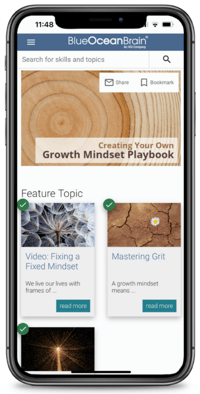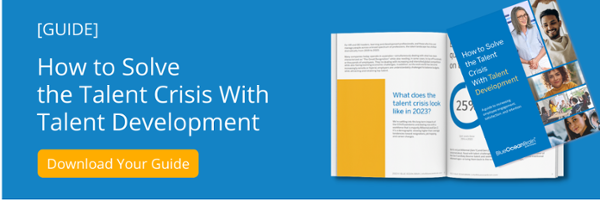Achieving high employee engagement seems to be the holy grail these days for many HR and DEI leaders—and for good reason. Employee engagement ties to satisfaction, productivity, loyalty, and even higher earnings per share. This means that if companies can increase employee engagement, they can potentially decrease employee turnover.
Unfortunately, many of us are dealing with stagnant and declining employee engagement.
Employee engagement lagging
Gallup tells us that employee engagement began to decline after more than a decade in the United States in 2021 when their research indicated a drop from 36% to 34%. And the news gets worse. Gallup indicates:
“The ratio of engaged to actively disengaged workers in the U.S. is 1.8-to-1, down from 2.1-to-1 in 2021 and 2.6-to-1 in 2020. This is the lowest ratio of engaged to actively disengaged employees in the U.S. since 2013, almost a decade earlier. The record high is a ratio of 2.7-to-1 recorded in 2019.”
These engagement figures were a precursor to an increase in resignation rates seen in 2022 when, according to the World Economic Forum, about 4 million workers in the U.S.—2.6% of the workforce—quit their jobs in October alone. Over the course of the year, more than 47 million quit their jobs.
Clearly, effectively engaging employees is an essential step companies can take to try and stem the turnover tide. But what exactly is engagement?
What engagement is and isn’t
Glint defines employee engagement as:
“The degree to which employees invest their cognitive, emotional, and behavioral energies toward positive organizational outcomes.”
That’s a good definition because employee engagement doesn't mean “happy” employees. Employees may love their jobs but still be disengaged. To some degree, that’s where the concept of "Quiet Quitting" comes into play. Employee engagement isn’t just showing up. But that, unfortunately, is what a lot of employees these days are doing – about 50% of them, according to Gallup.
Talent development and employee engagement
There are a number of things HR and L&D leaders, managers, and directors can do to help boost employee engagement. But one strategy that is showing increasing promise is talent development. LinkedIn’s 2022 and 2023 Workplace Learning Reports clearly indicate the value of talent development—not only for companies but also for employees.
Employees value opportunities for personal growth and development and are drawn to (and stay at) companies that provide these opportunities. In turn, companies benefit from employees who are better positioned to successfully perform the important work of the organization—the very definition of engagement!
Accessible training
Talent development has taken on a different face since the pandemic when companies were forced to shift their talent development activities to the digital environment. Today, as many employees continue to work in either remote or hybrid environments, access to digital training and development materials is still important. Over the past few years, companies have found that digital training can provide several key benefits for employees and companies. It can be produced and delivered far more broadly than traditional, in-person learning opportunities. Employees can access it when they most need it, not just when training sessions are scheduled. It can be consumed in small chunks or brief sessions rather than 2-hour, half-day, full-day, or even longer training marathons.
Over the past few years, companies have found that digital training can provide several key benefits for employees and companies. It can be produced and delivered far more broadly than traditional, in-person learning opportunities. Employees can access it when they most need it, not just when training sessions are scheduled. It can be consumed in small chunks or brief sessions rather than 2-hour, half-day, full-day, or even longer training marathons.
Monitoring training
Research from RedThread indicates that learning is more effective when it’s diverse, equitable, and inclusive. That means making training available and accessible to all employees, wherever and whenever they need it. It means making it easy for them to take advantage of training and development opportunities. And for organizations, it means monitoring which employees utilize these opportunities and proactively taking steps to close any potential gaps.
For instance, are newly hired women less likely than men to participate in leadership development activities? Are long-tenured men less likely to participate in communication or conflict-management training? Are employees in HR less likely to take advantage of STEM-based training than employees in IT? That kind of data can help employers target their talent development activities strategically to achieve measurable impacts and, as we’ve demonstrated, engagement.
To what extent are your employees directing their efforts positively in ways that drive desired organizational outcomes? How could more strategic talent development efforts help?
Need options?
As the talent crisis heats up, the need to modernize the talent development landscape is more important than ever. Use our new ebook, Solving the Talent Crisis With Talent Development, to help you align your L&D strategy with what today’s employees value and what your organization needs to achieve strategic objectives.
Our eBook covers:
- What employees value in L&D today.
- How talent development differs for the modern workforce.
- How to reshape the post-pandemic employee experience.
- L&D tactics to combat low engagement and turnover.
Download to learn more!




![[New eBook] Solving the Talent Crisis with Talent Development](https://blog.blueoceanbrain.com/hs-fs/hubfs/how-to-solve-the-talent-crisis.png?width=760&name=how-to-solve-the-talent-crisis.png)
